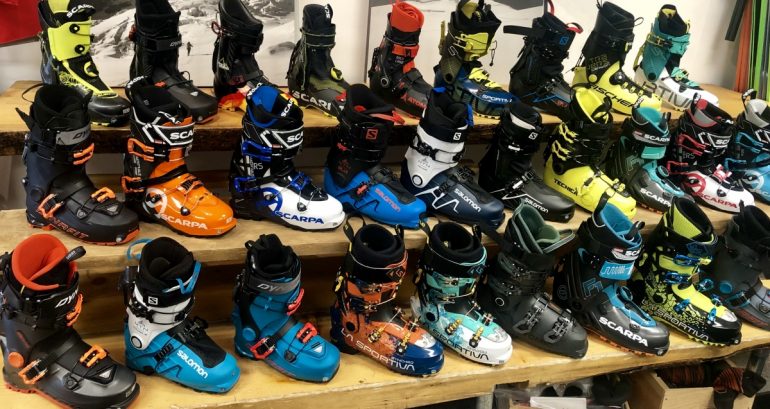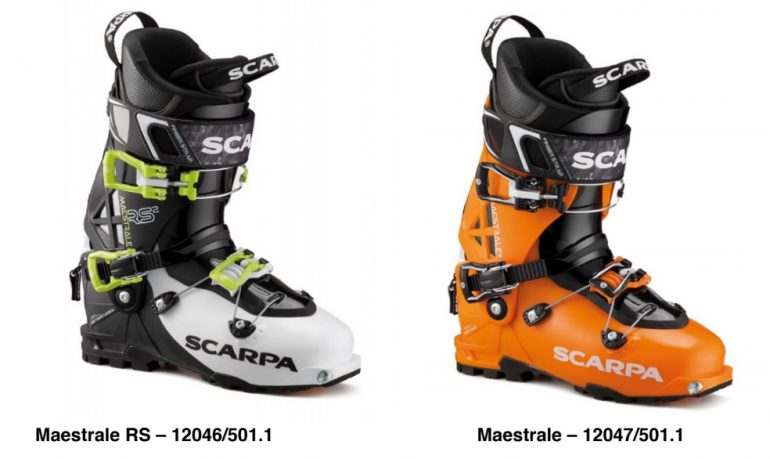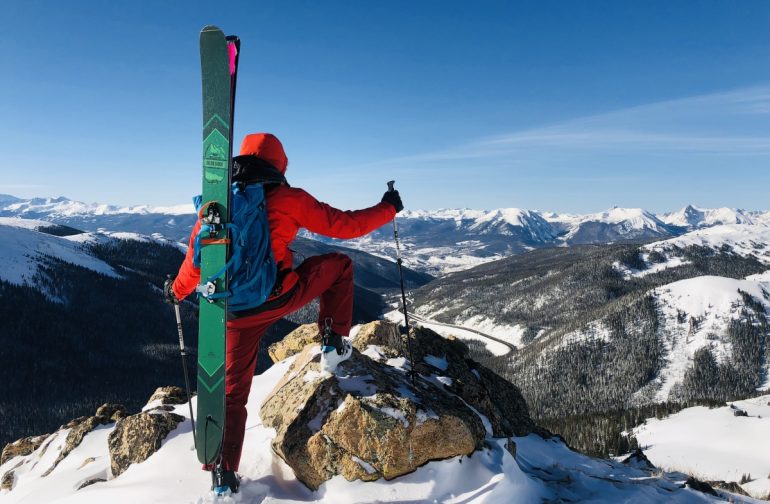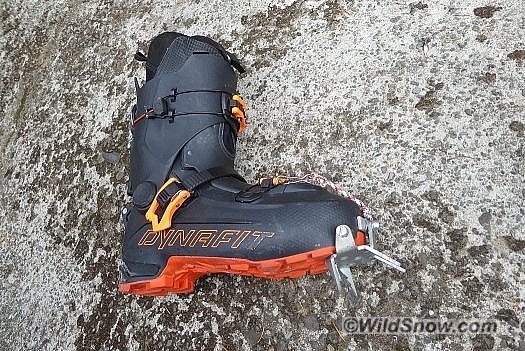Tech Tuesday is recurring segment sponsored by Dynafit to get you in the right touring gear and make sure you know how to use it.
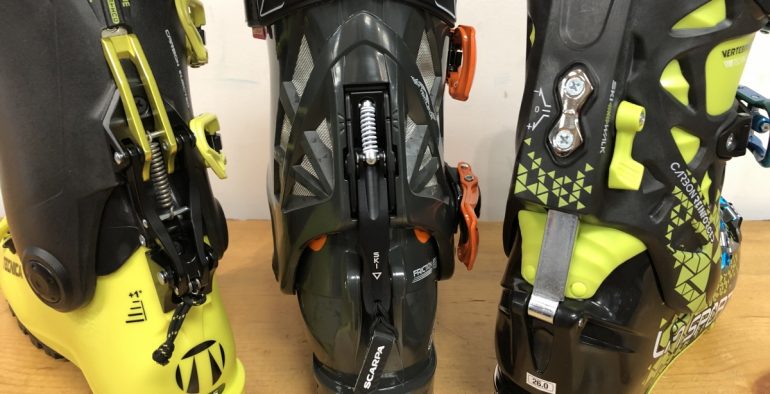
The external lever walk mode of the two left boots has become the standard, while the La Sportiva Spectre internalizes the process.
Tips on materials, features and buying used
Ski touring boots remain the most complicated link in the chain of gear available to get you into the mountains efficiently. In Part I of our boot buying guide, we developed an understanding of the types of touring boots and basic factors to consider when shopping. In Part II, we look at common features of touring boots to give you a deeper understanding. Depending on your intended use, some features are nice to have and some can be avoided. Here, 7 tips to help you choose the right ones, along with advice on buying used.
1. Materials define performance. Know your different types of plastic.
Polyurethane, or PU, is a plastic used in most alpine ski boots and some varieties of alpine touring boots. It’s stiff and has a consistent, familiar flex, and is inexpensive and easy to manufacture. Because it’s common in alpine boots, boot fitters are accustomed to working with it and are able to more effectively fit boots made with PU. Unfortunately PU is the heaviest of the materials used in ski boots as it needs to be thicker to provide necessary stiffness and stability. The plastic is also affected by temperature; the boot will feel noticeably softer on a warm spring day and stiffer on a cold day.
Pebax is another traditional plastic used in ski touring boots. It is light and stiff, but somewhat less forgiving than PU. Most AT boots are made of Pebax. Unfortunately you will be hard-pressed to find a Pebax boot that has the progressive flex of your resort boots. On the positive side, Pebax isn’t affected by temperature as much, so it’s great for spring ski mountaineering.
Grilamid is a relatively new shell material on the ski mountaineering boot scene, commonly seen in higher-end AT boots. It’s a specialized plastic that’s a formulation of nylon. Grilamid has the advantage of being stiff and strong, therefore minimal material can be used, which reduces weight and bulk. Although it’s stiff, some skiers feel Grilamid doesn’t have as nice a flex as polyurethane. It also tends to be expensive to manufacture, and those costs are passed through to the consumer.
Carbon fiber is used to varying degrees in high-end ski touring boots. It is ultralight and ultra stiff, and can dramatically reduce a boot’s weight. Unfortunately, carbon fiber boot parts are expensive and difficult to manufacture. It’s more common to see carbon fiber used as reinforcement while molding plastic. That way you can use lighter thinner plastic, but keep the boot stiff and high performance.
While most of the WildSnow backcountry skiing blog posts are best attributed to a single author, some work well as done by the group.

